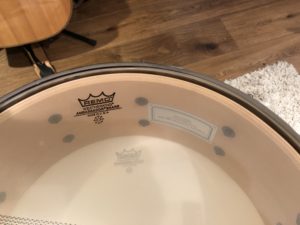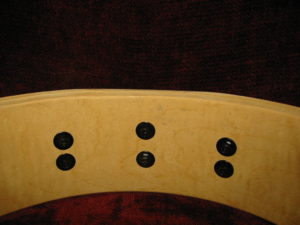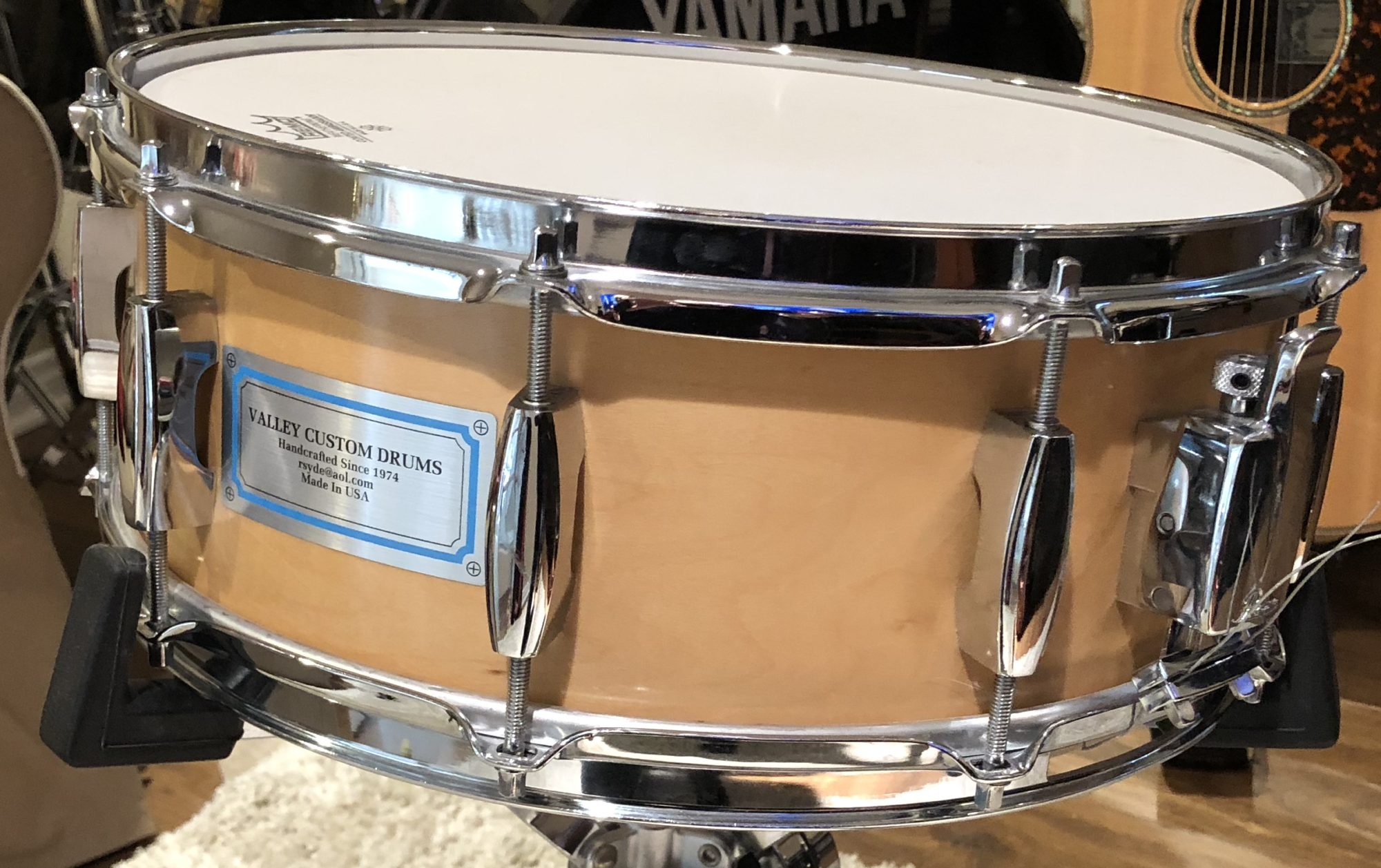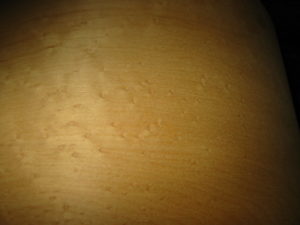
Wood:
The key to a good shell is the wood. There are many types of woods used on Drums, Maple, Birch, Mahogany, etc. The major characteristic is the way it vibrates. In order for it to vibrate, the shell has to be thin, however if it’s too thin, it will break and have a lot of overtones and if it’s too thick, it won’t vibrate hardly at all. So the key is to make the shell in plies. There goes the experimenting! Most of the Drum Companies used 3-6 thin plies, but since these plies were very thin, they needed to reinforce it with a ribbed piece of wood or it would crush. Another factor was different woods vibrated differently. We found that the best sounding wood was Maple. Not that Birch and the other woods weren’t good, they just didn’t have the same tone or bite that Maple has. There is a certain resonance that Maple has that no other wood does for Drums. Most of the Major Drum companies have and are still using Maple, but although the combination they used sounded great as a Tom or Bass Drum, it wasn’t the same on a snare. So now that we were narrowing down the type of wood, we needed to find the correct mixture. We experimented with all different thickness of plies, number of plies, ribbing and finally came up with an answer.
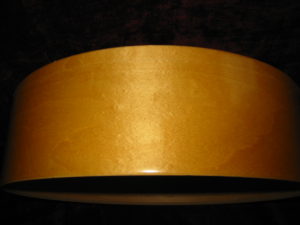
Plies:
The answer is you need enough plies that you can still have the resonance, still have the tone and still have the strength. Also, there are the types and thickness of plies. You can have 3 plies that are just as thick as 10 plies, so again the key is to use top quality plies of Maple of even thickness. Through our experimenting, we found the proper number of plies was 8 plies. Thick enough and thin enough.
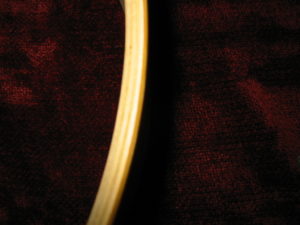

Size:
Size is also a key factor to the sound. As I mentioned earlier, Top Drummers carry an assortment of Snare Drums, from very small 3” Piccolos to 12” Marching Drums, all having their place and purpose. A smaller size Drum will of course have a higher Pitch where as a larger or deeper Drum will have a lower Pitch. Also, there is the head size, from 12” to 15.” What is right, they are all right, it just depends. For some situations, you need the smaller size since a smaller Drum will be crisper, more sensitive and give you that orchestral buzz. For some situations, you want a fat, meaty sound for the power of a backbeat. But most Drummers, unless you are a Top Drummer don’t have the room or the resources to buy a lot of Snare Drums, so we have taken the steps to have sizes that will fill all categories.
Bearing and Snare Beads:

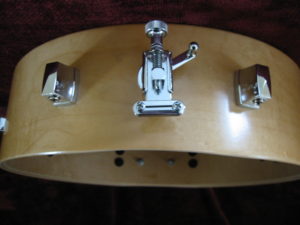
The bearing edge is where the head rests on the shell. You want to create a point with enough plies touching the head to will allow it to vibrate and be able to tune the drum. If you have a flat bearing edge, all of the plies will be pushing against the head and this will deaden the sound and make it difficult to tune. Consequently, if you have an edge that is too sharp, it will never tune properly since there will only be one ply touching the head. The key is to have a sharp edge with enough plies touching the head. The other very important factor is the snare beds. This is the area on both sides of the bottom of the shell near the Throw off and Butt Plate where the snares run along the bottom head. If you do not have a Snare bed, when you pull the tension on the snares it will bow and the center of the wire snares will not touch the center of the head and the same if the beds are too deep. You have to find the happy medium.
